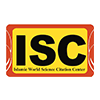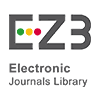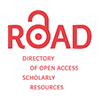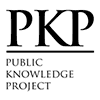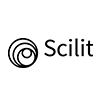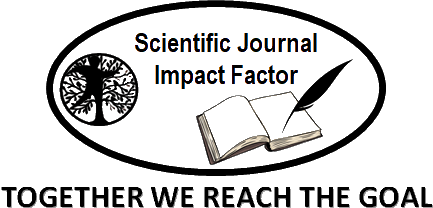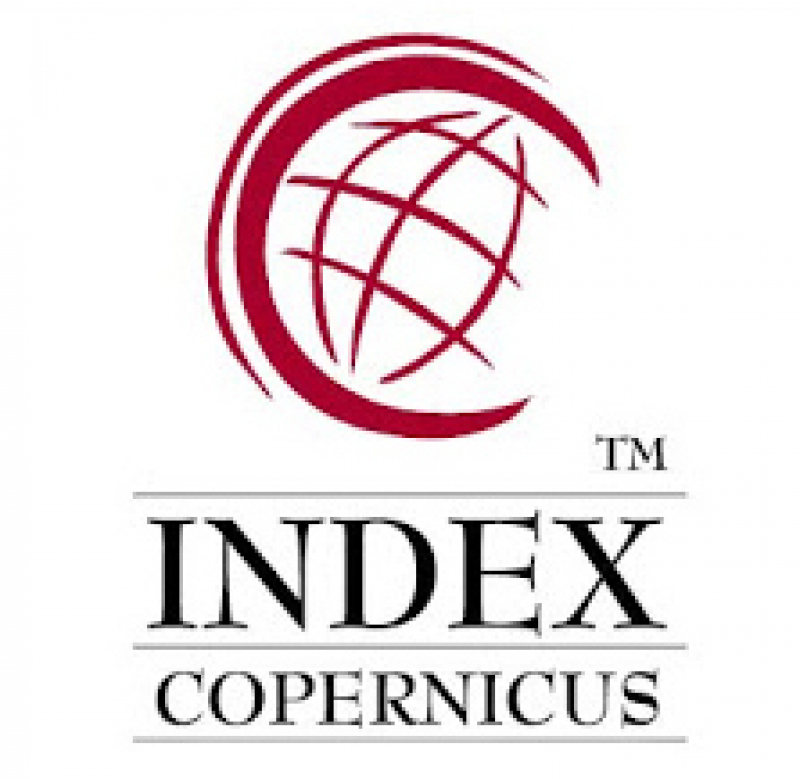Implementation of Differentiated Instruction in Product Component to Improve EFL Students Reading Comprehension
Abstract
Reading skills are essential in learning English, particularly for foreign language students. Reading also provides comprehensible input for others' skills in English language development. This study addresses the conventional teaching methods hindering optimal reading comprehension among tenth-grade students. This study employed classroom action research to improve student's reading comprehension scores, particularly in recount text material. The preliminary phase identified issues with inflexible assessment methods that lack to consider individual student differences. Two-cycle study utilizing differentiated instruction was conducted at a State Senior High School in Yogyakarta to address challenges in teaching recount text. The implementation of differentiated instruction improved reading comprehension in recount texts through various product components (PPT, Video, Audio, Comic, Text), specifically targeting 35 students in grade 10 phase E. The results of this study indicate that the implementation of differentiated instruction in product components in the classroom can be useful as a medium for tailoring students’ needs. The application of differentiated instruction also resulted in several changes, including the mindset of English teacher, students’ learning abilities and activities, and students score in recount text improvement. However, the study does not extensively explore external factors that may have influenced students' reading comprehension.
Keywords
Full Text:
PDFReferences
Abera Ayele Adare, Yanping Li, & Bereket Merkine Gebresilase. (2023). Assessing
Practices and Challenges in Implementing Differentiated Instruction in Mingde Primary School. Open Journal of Social Sciences, 11(2), 39–52. https://doi.org/10.4236/jss.2023.112007
Adelman, C. (1993). Kurt Lewin and the Origins of Action Research. Educational
Action Research, 1(1), 7–24. https://doi.org/10.1080/0965079930010102
Amirreza, K., Olivia, M., Elexa, D., Annie, H., Emma, M., Hannah, R., & Heaven,
S. (2023). Differentiated instruction and assessment. I-Manager’s Journal on English Language Teaching. https://doi.org/10.26634/jelt.13.3.19950
Anggareni, P., & Hidayat, A. (2022). Students' Creative Thinking Skills on
Differentiated Instruction. International Journal of Trends in Mathematics Education Research. https://doi.org/10.33122/ijtmer.v5i4.161
Chamberlin, M., & Powers, R. (2010). The promise of differentiated instruction for
enhancing the mathematical understandings of college students. Teaching Mathematics and Its Applications, 29(3), 113–139. https://doi.org/10.1093/teamat/hrq006
Chien, C.-W. (2015). Analysis of Taiwanese elementary school English teachers’
perceptions of, designs of, and knowledge constructed about differentiated instruction in content. Cogent Education, 2(1), 1111040. https://doi.org/10.1080/2331186x.2015.1111040
Coubergs, C., Struyven, K., Vanthournout, G., & Engels, N. (2017). Measuring
teachers’ perceptions about differentiated instruction: The DI-Quest instrument and model. Studies in Educational Evaluation, 53, 41–54. https://doi.org/10.1016/j.stueduc.2017.02.004
Deunk, M. I., Smale-Jacobse, A. E., de Boer, H., Doolaard, S., & Bosker, R. J.
(2018). Effective differentiation practices: A systematic review and meta-analysis of studies on the cognitive effects of differentiation practices in primary education. Educational Research Review, 24, 31–54. https://doi.org/10.1016/j.edurev.2018.02.002
Dijkstra, E. M., Walraven, A., Mooij, T., & Kirschner, P. A. (2016). Improving
kindergarten teachers’ differentiation practices to better anticipate student differences. Educational Studies, 42(4), 357–377. https://doi.org/10.1080/03055698.2016.1195719
Dixon, F. A., Yssel, N., McConnell, J. M., & Hardin, T. (2014). Differentiated
Instruction, Professional Development, and Teacher Efficacy. Journal for the Education of the Gifted, 37(2), 111–127. https://doi.org/10.1177/0162353214529042
Joyce Vantassel-Baska, Joyce Vantassel-Baska, & VanTassel-Baska, J. (2013).
Differentiation in Action. 131–144. https://doi.org/10.1007/978-94-6209-419-2_12
Kótay-Nagy, A. (2023). Differentiated instruction in the EFL classroom: An
interview study on Hungarian primary and secondary school EFL teachers’ views and self-reported practices. Journal of Adult Learning, Knowledge and Innovation, 6(1), 33–46. https://doi.org/10.1556/2059.2023.00076
Kotob, M. M., & Ali Abadi, M. (2019). The Influence of Differentiated Instruction
on Academic Achievement of Students in Mixed Ability Classrooms. International Linguistics Research, 2(2), p8. https://doi.org/10.30560/ilr.v2n2p8
Lunsford, K. J. (2017). Challenges to Implementing Differentiated Instruction in
Middle School Classrooms with Mixed Skill Levels.
Maulana, R., Smale-Jacobse, A. E., Helms-Lorenz, M., Chun, S., & Lee, O. (2020).
Measuring differentiated instruction in The Netherlands and South Korea: Factor structure equivalence, correlates, and complexity level. European Journal of Psychology of Education, 35(4), 881–909. https://doi.org/10.1007/s10212-019-00446-4
Magableh, I. S. I., & Abdullah, A. (2020). On The Effectiveness Of Differentiated
Instruction In The Enhancement Of Jordanian Students' Overall Achievement. International Journal Of Instruction, 13(2), 533-548.
Mirawati, I. G. A., Suwastini, N. K. A., Haryanti, N. D., & Jayantini, I. G. A. S. R.
(2022). Differentiated Instructions: Relevant Studies on Its Implementation. Prasi, 17(1), 11–21. https://doi.org/10.23887/prasi.v17i1.41867
Moya, N. P. G., & Tobar, M. C. S. (2019). Differentiated Instruction: Productive
Skills Development With High School and University Students. Informatica Didactica, 11(1), 67–73. https://doi.org/10.29033/id.v11i1.645
Rinawati, N. K. A., Jayantini, I. G. A. S. R., Dantes, G. R., & Suwastini, N. (2021).
Differentiated Instruction for EFL Classroom. Journal, 7(1), 14–41. https://doi.org/10.22202/tus.2021.v7i1.4719
Onyishi, C. N., Onyishi, C. N., Sefotho, M. M., & Sefotho, M. M. (2020). Teachers’
Perspectives on the Use of Differentiated Instruction in Inclusive Classrooms: Implication for Teacher Education. The International Journal of Higher Education, 9(6), 136–150. https://doi.org/10.5430/ijhe.v9n6p136
Osuafor, A. M., Okigbo, E. C., & McConnell, J. M. (2013). Effect of differentiated
instruction on the academic achievement of Nigerian secondary school biology students. Educational Research, 4(7), 555–560.
Ojong, A. S. (2023). Unraveling the Efficacy of Differentiated Instruction in
Enhancing Second Language Acquisition: A Comprehensive Review and Future Directions. International Journal of Linguistics Literature & Translation, 6(6), 8–18. https://doi.org/10.32996/ijllt.2023.6.6.8
Porta, T., & Todd, N. (2022). Differentiated instruction within senior secondary
curriculum frameworks: A small-scale study of teacher views from an independent South Australian school. Curriculum Journal. https://doi.org/10.1002/curj.157
Shivaraju, P., Manu, G., M, V., & Savkar, M. (2017). Evaluating the effectiveness
of pre- and post-test model of learning in a medical school. National Journal of Physiology, Pharmacy and Pharmacology, 7(9), 1. https://doi.org/10.5455/njppp.2017.7.0412802052017
Smale-Jacobse, A. E., Meijer, A., Helms-Lorenz, M., & Maulana, R. (2019).
Differentiated Instruction in Secondary Education: A Systematic Review of Research Evidence. Frontiers in Psychology, 10, 2366–2366. https://doi.org/10.3389/fpsyg.2019.02366
Subban, P. (2006). Differentiated Instruction: A Research Basis. International
Education Journal, 7(7), 935–947.
Taylor, B. K. (2015). Content, Process, and Product: Modeling Differentiated
Instruction. Kappa Delta Pi Record, 51(1), 13–17. https://doi.org/10.1080/00228958.2015.988559
Tomlinson, C. A. (2000). Differentiation of Instruction in the Elementary Grades.
ERIC Digest.
Tomlinson, C. A. (2001). How To Differentiate Instruction in Mixed-Ability
Classrooms (2nd ed.).
Tomlinson, C. A., Brighton, C. M., Hertberg, H. L., Callahan, C. M., Moon, T. R.,
Brimijoin, K., Conover, L. A., & Reynolds, T. (2003). Differentiating Instruction in Response to Student Readiness, Interest, and Learning Profile in Academically Diverse Classrooms: A Review of Literature. Journal for the Education of the Gifted, 27, 119–145. https://doi.org/10.1177/016235320302700203
Vantassel-Baska, J. (2013). Differentiation in Action. In Differentiation of
Gifted Learners: Practical Strategies for Success, 131–144. https://doi.org/10.1007/978-94-6209-419-2_12
DOI: http://dx.doi.org/10.18415/ijmmu.v12i4.6655
Refbacks
- There are currently no refbacks.
Copyright (c) 2025 International Journal of Multicultural and Multireligious Understanding

This work is licensed under a Creative Commons Attribution-NonCommercial-NoDerivatives 4.0 International License.
https://ijmmu.com
editor@ijmmu.com
facebook.com/ijmmu
Copyright © 2014-2018 IJMMU. All rights reserved.







